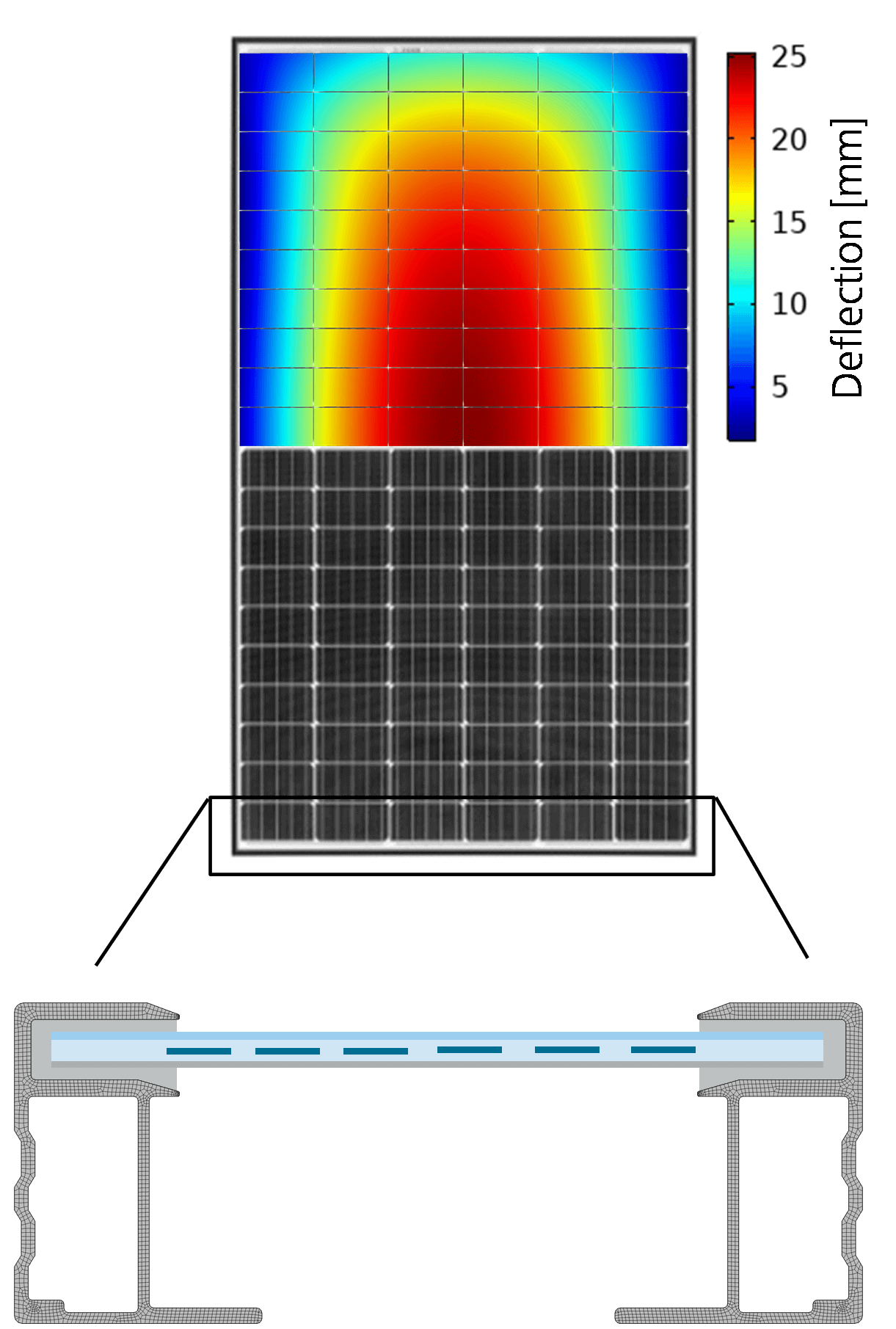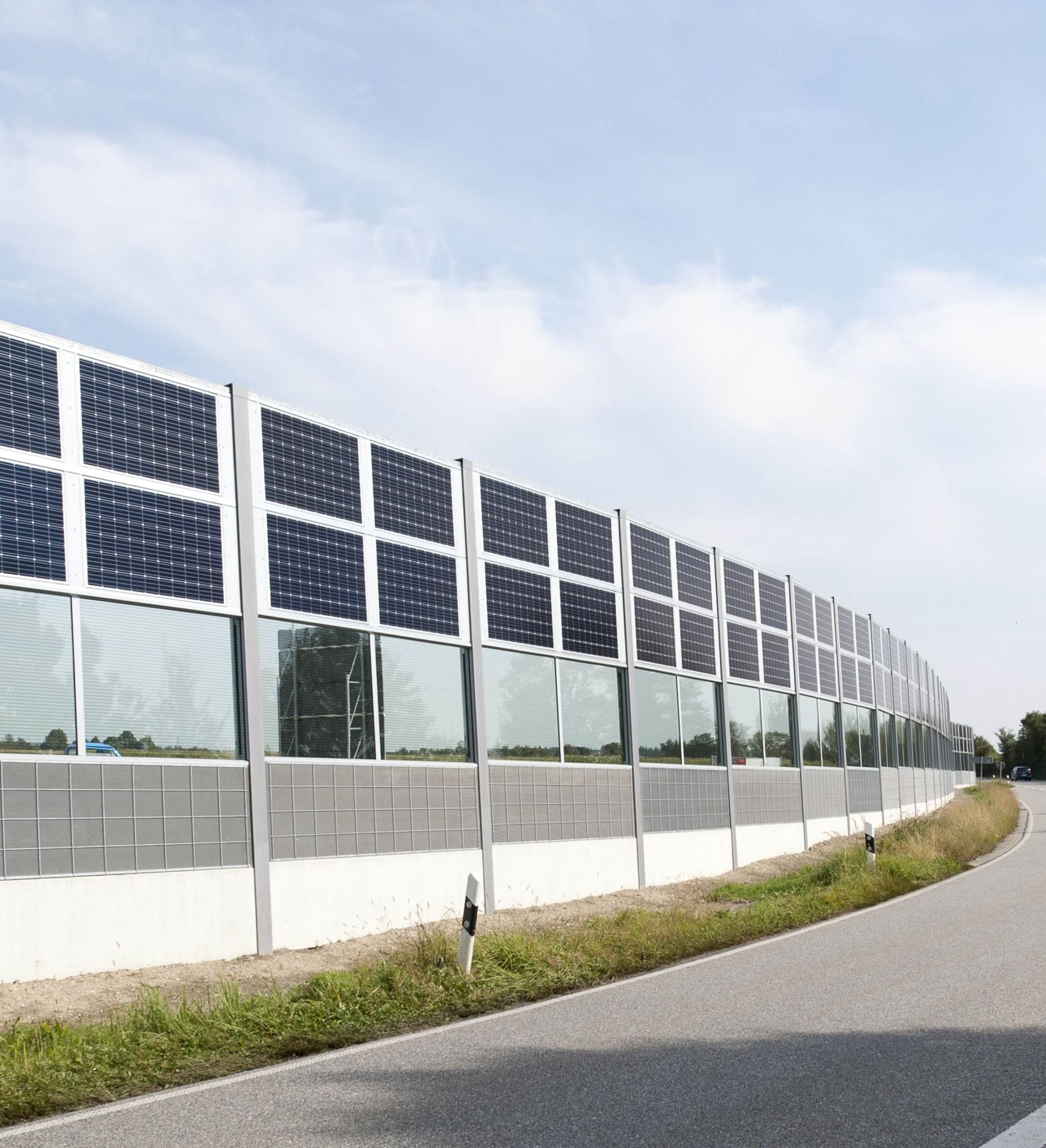Mechanical loads are one of the main causes of PV module failure. Either due to surface loads or thermally induced mechanical loads and resulting joint failure or interconnector fatigue.
Using the finite element method, we make mechanical stresses in the PV module visible in order to minimize them. We couple structural mechanics with other physical fields, such as heat transfer for thermomechanical simulations or wind loads.
By interfacing with a CAD program and using a High Performance Computing Cluster (HPC cluster), we are able to map very complex and thus computationally expensive problems.





